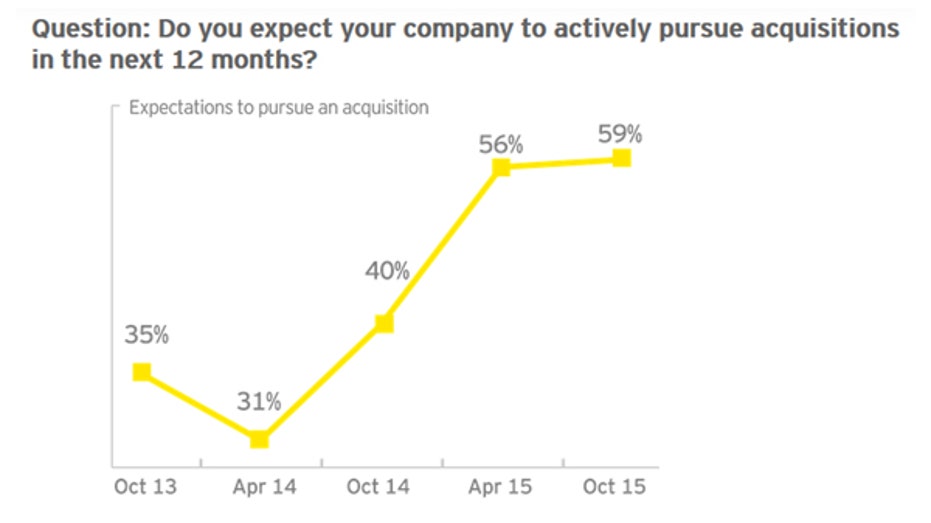Inversion Crackdown Won't Dent 2016 Dealmaking

After a record-breaking year of transactions in 2015, a slow start to the new year put Wall Street’s appetite for dealmaking on ice.
In the first quarter of 2016, mergers and acquisition values totaled $683.1 billion, a whopping 22% drop from levels during the same time the year prior, according to data compiled by KPMG. Moreover, just more than 9,000 deals were announced during the first three months of the year, an 11% decrease from 1Q 2015.
Rich Jeanneret, EY’s Americas vice chair of transaction advisory services, said while global-growth worries and uncertainty surrounding central bank action slammed equity markets worldwide and contributed to the loss in confidence among those seeking to engage in transactions, there were other seasonal factors at play as well.
“The first quarter isn’t always the best proxy because companies are closing out the books, they’re distracted, and finalizing their numbers for the year. We tend to see M&A have disproportionate volume later in the year,” he explained.
It’s not all bad news. Corporations looking to unlock value or shed assets likely have a reason to be optimistic heading into the second quarter.
“The momentum of low interest rates, plenty of investment capital, and countries outside the U.S. having slow-growth economies, and M&A as a way to do top-line growth which has been rewarded by trading up buyer stocks – all of that will continue,” Jeanneret said. “I think there are a lot of ingredients to propel the M&A market.”
To that point, EY’s Capital Confidence Barometer showed corporations have the highest appetite to make acquisitions in six years – that’s after a record increase six months ago.

And of those corporate executives surveyed, 83% expect to see the M&A market improve over the next 12 months.

That willingness to engage in discussions about buying or selling a business or unit is driven by a couple of factors, Jeanneret explained: Pre-planned divestitures to ward off objection by regulators, and pressure from activist investors. Those are themes that picked up steam in 2015 and are expected to carry through this year as well.
“[Companies]are thinking issues through beforehand…two things have happened these last two years: An uptick in the number of deals and the number of bigger deals getting done, particularly multi-billion dollar transactions, which will attract attention of a regulator because you’re eliminating material competition in the industry,” he said.
On the other hand, for companies that haven’t thought about or are mostly unwilling to look at M&A as a viable option for either becoming more agile or more efficient, activist investors will be there to spur action, Dan Tiemann, global head of transaction services at KPMG, said. He believes that will be one of the biggest drivers of companies looking to spin off various units of their businesses.
“Every board is certainly looking at their portfolio and saying, if they haven’t been approached, what is their plan or strategy if they are. And what is the strategy for the business: What are they getting right, do they have the right portfolio of assets to compete,” he said.
While Tiemann said there are plenty of reasons for companies to pursue tie ups, there is one area where momentum will slow. Inversions -- or the practice of moving a company’s corporate headquarters to a nation with a lower tax burden -- are much less likely to be used as a motivating factor for American companies to pursue a deal in light of more regulations on the practice from the U.S. government. Those proposed rules led to the break up last week of one of 2015’s biggest deals between Pfizer (NYSE:PFE) and Allergan (NYSE:AGN).
Jeanneret said Wall Street is likely to see more distressed M&A this year, and advised keeping an eye on energy and other commodity industries.
“M&A can ameliorate that stress. A lot of these entities have real problems with balance sheets, but I don’t think lenders can take these assets back and operate them any better or recover value better. There’s likely to be more cooperation from creditors in doing M&A in energy where putting together two companies to strengthen the balance sheet,” he explained.
Jeanneret expects at activity to pick up in the back half of the year rather than accelerate in the second quarter.



















